Who Can Date During a "Genocide"?
"Jewish identity isn’t the problem — until it becomes a prop to indict the very people it comes from."
By Steve Karras
Special to JEWDICIOUS
I wasn’t courting an identity crisis when I opened one of the less-lit corners of a dating app. Just a dispassionate scroll. Looking for someone like-minded in absurdity. Someone who wouldn’t hold it against me that I’m still raising a teenager. And still Jewish, in a world that increasingly treats that like a disclaimer.
Dating now feels like crashing someone else’s lifestyle brand. Or auditioning for The White Lotus. I’ve never seen more spas, Taj Mahal backdrops, warrior poses on Balinese beaches. Who has that kind of time or money? I can’t remember half of my daughter’s orthodontist appointments.
I’m still learning about my “love language” and a host of acronyms. For weeks, I thought HSP meant a herpes disclosure. (It’s actually Highly Sensitive Person.) I even added it to my profile. In solidarity.
And there she was again.
We’d chatted the summer before. Beautiful. Articulate. A trauma therapist. And she was the real thing—a clinician who works with war victims. Not for everyone, but I was smitten.
This time, something stopped me cold. Her new photos.
A raised fist. A keffiyeh. A tight mask. A sign in her hand that read:
Ukrainian Jewish Trauma Therapist for Free Palestine
Each word—Ukrainian, Jewish, Therapist, Palestine—carefully arranged. A confession and a declaration all at once. She even noted that she brought snacks.
On most apps, you’re prompted to complete lines like, “Let’s make sure we’re on the same page about...”
Her answer? “It’s not Israel. It’s illegally occupied Palestine.”
She followed it with a postmodern manifesto:
“Write me a poem. Come to a protest. Feed me vegetables you’ve grown.”
It read like a fantasy, right out of the Levant. Earthy. Sensual.
The gummy I’d taken kicked in just as the Velvet Underground’s “Venus in Furs” came on. That hypnotic drone pulled me into a fog. Magnificently unhinged. I pictured her beneath a eucalyptus tree eating a fig. Beaming and unperturbed by the jagged volley of Kalashnikov fire from a few boisterous militants, probably celebrating a cousin’s acceptance to Harvard.
Then a knock at the door.
Not her. DoorDash.
Baba ghanoush and dolmas combo from Pita Inn.
Mid-bite, I thought: maybe dating a trauma therapist could be perfect.
Someone who who could mend what Roger Miller called a “walkin’, talkin’, cryin’, barely-beatin,’ broken heart.”
But I got the message. I wasn’t her type. And by then, I’d stopped imagining myself to be.
She’d said: “I’ll brag about you to my friends if you’re an outspoken fighter for Palestinian independence.”
Fair enough. I’m still figuring out my dating goals.
Her profile shifted further—from human to propaganda. A recruitment brochure for the Izz ad-Din al-Qassam Brigades. She doubled down. Still leading with “I am a trauma therapist who works with victims of war and genocide.”
Then:
“The genocide didn’t start on October 7.”
I felt something snap.
What happened that day wasn’t murky or debatable. And it was livestreamed.
I’d just watched footage of a pickup truck ripping through Gaza. Five men in the back, rifles raised. A man crouched over the crumpled, bloodied body of Shani Louk. Stripped. Broken. Paraded like a hunter’s trophy without reverence. The vehicle slowed for others to spit and pummel what was left of a girl who’d been dancing at the Nova Music Festival two hours earlier.
Still, I was compelled to reach out.
My first message?
“You should be on a no-fly list.”
I didn’t send it. I took a walk. Put on Sam Harris’ mindfulness app. Let my breath catch up to my brain. Then I sat down. Erased it. And wrote something more composed.
I referenced the DSM-5—the professional manual for diagnosing mental disorders.
I wrote:
“So which DSM-5 category fits a Jewish trauma specialist who vanishes when the trauma is Jewish?”
No response.
I must’ve pissed her off.
But I saw her sign again in my head. The word Jewish. Center-aligned. Committed. Perfectly branded.
Then my brain flicked—like a View-Master—into another image. Another protest. Decades earlier.
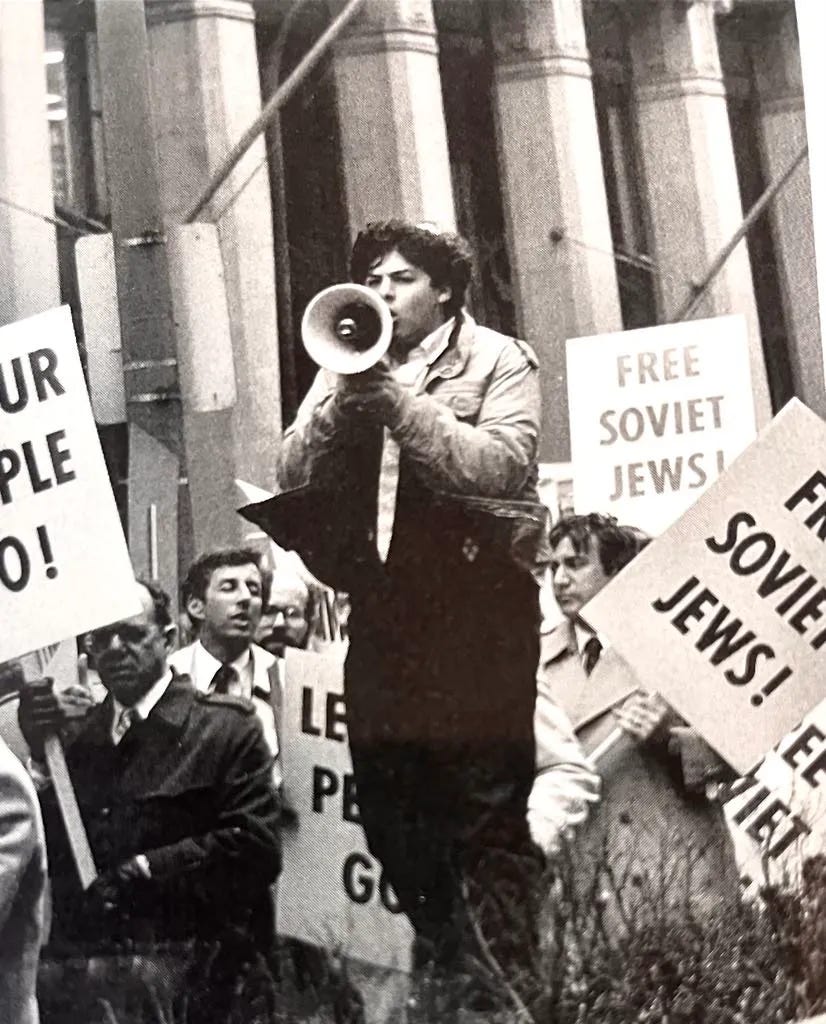
Chicago, 1985. A teenager with a bullhorn outside the Civic Opera House during a Bolshoi Ballet performance. The rally was organized by Chicago Action for Soviet Jewry.
That teenager? Jack Wasserman. USY rep from Beth Hillel—the synagogue with the giant “Save Soviet Jews” sign off the Edens expressway. He’d been cast in On the Right Track with Gary Coleman, a homegrown celebrity from a closer Zion. Zion, Illinois.
In the Soviet Union, Judaism was functionally outlawed. Hebrew schools were shut down. Torah scrolls were seized. Teaching or even learning Jewish history could get you watched, detained, or worse. By the 1970s, Jews who applied to leave—Refuseniks—were fired from jobs, denied exit visas, and sometimes arrested. Even then, “Zionist” had become shorthand for “traitor.”
That’s why Jews got organized. They showed up. Not to intimidate or chant slogans through megaphones in libraries. They handed out leaflets. Lit candles. Marched in the cold so strangers could get out of Moscow or Lviv and build a life somewhere else. One of them was Jack Wasserman.
When I met Jack and his family years later, he told me he’d been denied a student visa by the Soviets. Flagged by the KGB. Maybe it was the bullhorn. Maybe they’d screened On the Right Track.
Another Jewish name that stays with me: Robert Schrayer. My parents took me to a fundraiser at his house in Highland Park, Illinois—the Risky Business house. “Joel, listen, this is my cousin, Reuben. He's from Skokie.” That house.
Schrayer was a lion of support for Jews in need, no matter where they were.
When he died in 2008, my friend’s dad, Steve Nasatir, said: “Bob would travel to Israel, the former Soviet Union, Ethiopia—anywhere Jewish lives were in danger.”
He helped get thousands of Refuseniks out. Including my friend Leah’s family, who left Kyiv, passed through Vienna and Rome, and landed in Chicago. They stayed. They built.
And maybe—just maybe—the woman with the sign found safe harbor too. Because people like Jack and Bob showed up and put their names and reputations on the line for strangers. For Jews they didn’t know, and would never meet.
It wasn’t charity. And it wasn’t vitriol, colonization, or some settler blueprint.
It was Jewish peoplehood in action. Quiet, rooted, and alive.
A born belief that you show up for each other across oceans, across generations.
That was the ethic. The instinct. Just the act.
The quiet essence of Zionism before the word became malignant.

And she shows up too, along with the other “As a Jew” Jews.
They lead with it, but only as a credential.
A disclaimer.
A backstage pass to disavow the whole project, loudly, publicly, defiantly.
Branded keffiyehs. Face masks.
Like Etsy launched a terror franchise.
They show up in fatigues and Hamas-green headbands—identical to the ones in the GoPro carnage from October 7.
The grotesque absurdity of it would be laughable if it weren’t so devastatingly real.
Behind the declarations and pedantic slogans is something worse: the weaponization of identity.
“Zionist” was once a broad, even aspirational term—a belief in Jewish continuity, security, and the right to exist among nations.
Now it’s a slur so expansive it erases everything it touches—context, conscience, the capacity for grief.
Jewish grief.
But here’s the thing they won’t let you say out loud: it’s possible to grieve for the murdered without abandoning your grief for the displaced. You can mourn a festival-goer and a child in Rafah. You can feel broken by both without being broken yourself.
What’s collapsing isn’t empathy. It’s permission to feel it without preconditions.
And somewhere in that performance is the slogan I keep seeing everywhere:
“Know the difference between anti-Zionism and antisemitism.”
It’s not a distinction. It’s a deflection—designed to shut you up before you’ve even spoken.
It suggests that Jews are too reactive to tell the difference between disagreement and dehumanization.
That anyone who calls it out must be hysterical.
But how obscene the proposition — ask the young man who called his parents from the phone of a woman he’d just murdered at a kibbutz.
“I killed ten Jews with my own hands,” he said, imploring them to check WhatsApp.
Did he pause to parse the nuance?
Or ask what was done to Bracha Levinson, a 65-year-old woman from Kibbutz Be’eri.
Shot, stripped, and dragged into the street.
One of her killers livestreamed it from her Facebook account.
That’s how her granddaughter in Japan found out she was dead.
And what was Nova, other than DJs, music, open sky, and unguarded joy?
A rave steeped in aspirational peace.
Coexistence.
The attacks were so grotesquely gendered, so sexually sadistic, that even UN Women eventually issued a statement expressing “alarm” at the scale of gender-based atrocities.
And still, from the loudest activist circles—on campuses, at rallies, in digital spaces—not a word.
Not from the conspicuous Jewish activists.
Apparently, when the victims are Zionists, rape becomes debatable.
The “Not In My Name” crowd helps bend history into whatever shape the moment demands—distorting language, scrubbing context.
No footage, no facts, no mountain of evidence seems to interrupt the fantasy that October 7 was resistance.
Memes began circulating images of Zivia Lubetkin, one of the only surviving leaders of the Warsaw Ghetto Uprising, juxtaposed with masked Hamas fighters.
You’ll have to excuse me for breaking ranks, but I struggle to think of anything more insulting to memory, history, and reason. Never mind that it’s intellectually dishonest—it’s not even in good taste.
As if starving, untrained partisans with pistols and no exit strategy were somehow equivalent to the armed wing of an Iranian proxy state, operating from an elaborate underground tunnel network stocked with encrypted comms, foreign weapons, drones, fuel, and hostages.
The Jews in the ghetto weren’t hiding behind civilians.
They were civilians.
They didn’t take hostages.
They were the hostages.
This isn’t just a twisted analogy.
It’s a moral grift.
It weaponizes Jewish misfortune to hurl back at us—without knowing, or caring about, the details.
And if mid-twentieth century history feels too far removed—how about just a few years ago?
At its height, ISIS claimed a caliphate spanning over 35,000 square miles—more than four times the size of Israel.
And yet, none of those actual colonizers sparked the kind of moral disruption we’re seeing now.
No campus encampments.
No hostage posters for the girls of Sinjar.
No TikTok tributes to the Yazidi dead.
But the footage existed—hours of it.
Mass shootings of Kurds, Christians, Yazidis.
Slavery markets. Executions in stadiums.
Men kneeling at the edge of rivers, gunned down in rows.
But they didn’t get murals in Brooklyn.
Or rallies in Sydney.
Apparently their suffering wasn’t brandable.
Whether ISIS or Hamas, the soundtrack is the same: Allahu Akbar.
The intonation of the divine, used to bless the slaughter.
You hear it in the final voicemails.
In WhatsApp recordings.
In phone calls, mid-conversation, as parents tried to calm their daughters—just before the line went dead.
It’s there behind the crying. Behind the pleading for their lives.
Behind the short bursts of gunfire.
A phrase repeated like punctuation.
Allahu Akbar.
The executions were endorsed the same way—by invocation.
The same words Zarqawi and comrades bellowed while sawing off Nick Berg’s head.
The same chant echoing as Daniel Pearl’s life ended.
Daniel Pearl’s final words, spliced into the video:
“My father is Jewish. My mother is Jewish. I am Jewish.”
He said it clearly. Without apology.
Not in shame—but in truth.
And that was the point.
They wanted the world to hear it.
It was the charge.
And the death sentence.
And it’s not the first time Jewish identity has been flattened into a target.
In 1935, the Nuremberg Laws stripped Jews of citizenship and rights—by legal definition. The classification came first. Then the loss of rights. Then the murder. What the Nazis codified, others now sanctify in chants, sermons, and charters.
Today, the same thing is happening—digitally. You don’t need a Nuremberg edict when a hashtag will do.
TikTok. Twitter. Campus flyers. They do the job now.
“Zionist” doesn’t mean Jew—unless you’re shouting it at a synagogue, a deli, a student wearing a Magen David or kippah. Or spray-painting it on a dorm door. Or targeting Israeli fans at a soccer match in Amsterdam.
“Genocide” isn’t a description anymore. It’s an accusation. A weaponized claim that tells you what Zionists are inherently believed to be guilty of perpetrating.
Never mind that the word was coined by a Jew to describe the Third Reich’s systematic murder of one-third of the world’s Jewish population.
And in the middle of it are young, educated, well-meaning Jews trying to stay in the conversation by shaving off the parts of themselves that might make others uncomfortable.
They host Seders in the university encampments. They sing Yiddish labor songs from the Jewish Socialist Bund like it's 1936 in Warsaw, not 2025 in Morningside Heights. Equal parts earnest and absurd.
As if Jewish identity is only safe when it’s symbolic, never sovereign.
And that’s the part I still can’t square:
Why claim it at all?
Why march with “Jewish” on your sign, if everything you’re doing is to distance yourself from what that identity has meant?
If you claim the identity, the history comes with it. The exile, the ache, the accusations. The contributions—in medicine, art, science, service—offered without condition. Achievements wildly out of scale with their numbers.
Maybe it’s about wanting perfection from your people, maybe even from yourself—perfection no nation or community could ever meet. But you’re tethered to more than just the parts you like.
So… what kind of Jew are you?
And anyway, the part of her profile where she once described herself as Jewish? Gone. All that’s left is a nod to “my people,” just enough to call them out for genocide.
The keffiyeh draped across her shoulders. And watermelon emojis.
It’s smart, in a way, if she’s expanding her search for suitable life partners.
In Montreal or London, Dublin, Amsterdam, Paris—wherever Greta Thunberg draws a crowd—there’s no shortage of would-be suitors, all on the same page.
And if that doesn’t work out, she may consider moving to Qatar.
So this is the part where I ask her directly:
What would the trauma therapist say if the names on her new intake forms were:
Goldberg-Polin. Bibas. Silver. Katsman.
Not the dead—their families. Their friends. Their survivors.
Would she refer them out?
Suggest they journal through their Zionism?
Or tell them to go back—to Morocco. Iraq. Iran. Egypt. Syria. Poland. Ukraine—where Zionism didn’t emerge from conquest, but from fear. From flight. From massacres.
In Odessa. In Berdichev. In Kyiv at Babi Yar. In the woods outside Kryvyi Rih, where President Zelenskyy’s ancestors—and perhaps yours too—were murdered.
Where a million Jews were killed by bullets all over Ukraine before the Nazis made murder more efficient with gas.
At one point, her profile read:
“Who can date during a genocide?”
I don’t know.
I told you—I wasn’t courting an identity crisis...
STEVE KARRAS writes about culture, memory, and music, with occasional detours into dating despair. His film About Face, about Jews who fled the Nazis and came back in uniform, airs on PBS this year.
From navigating the nuances of family and relationships to unpacking history and politics to finding the human angle on sports and entertainment — plus our unsparing take on what’s happening in the Jewish world — the canvas at JEWDICIOUS is limitless!


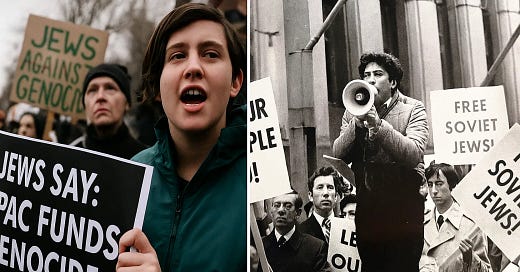


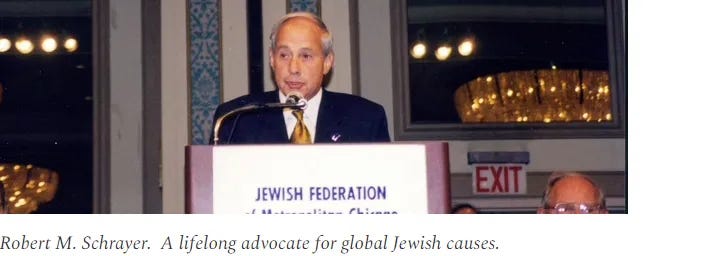
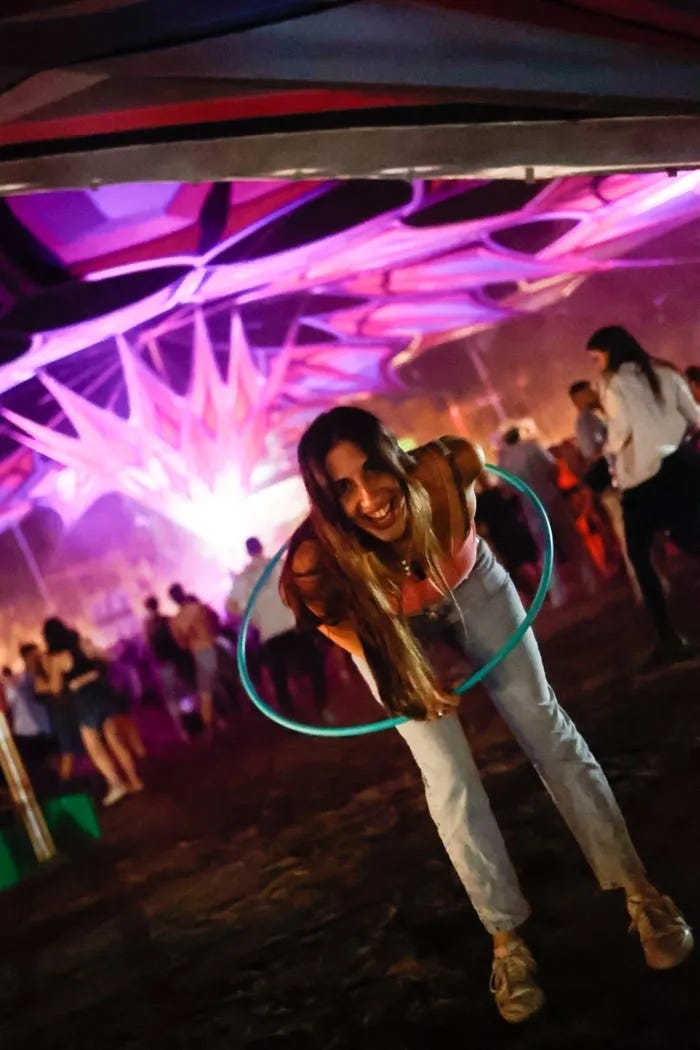
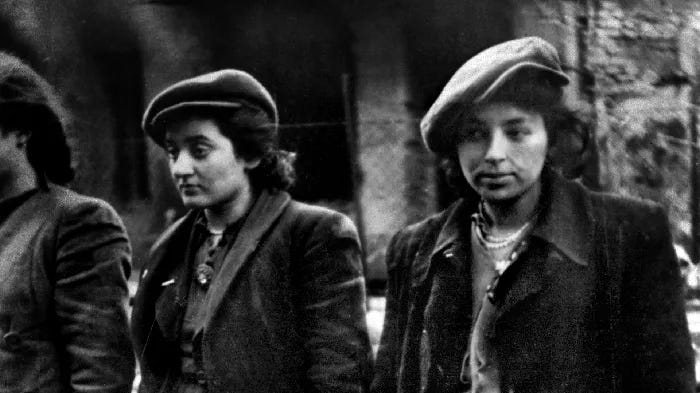
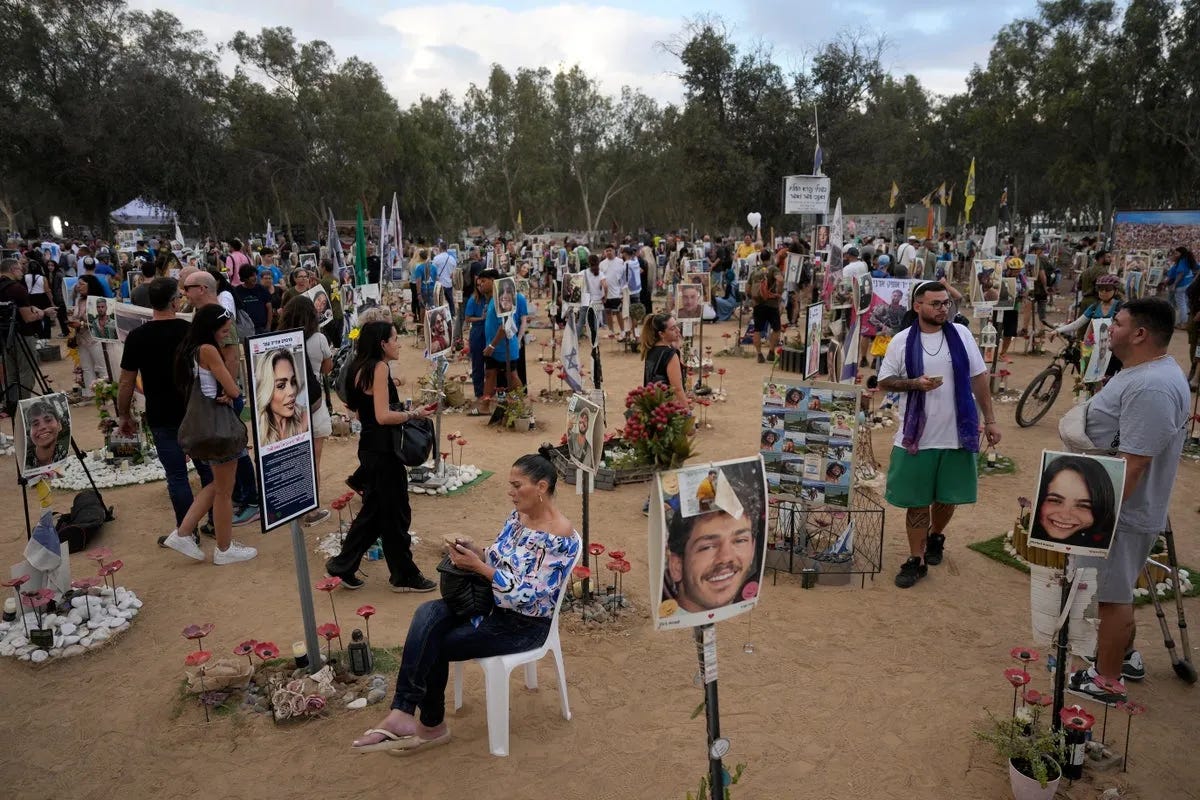
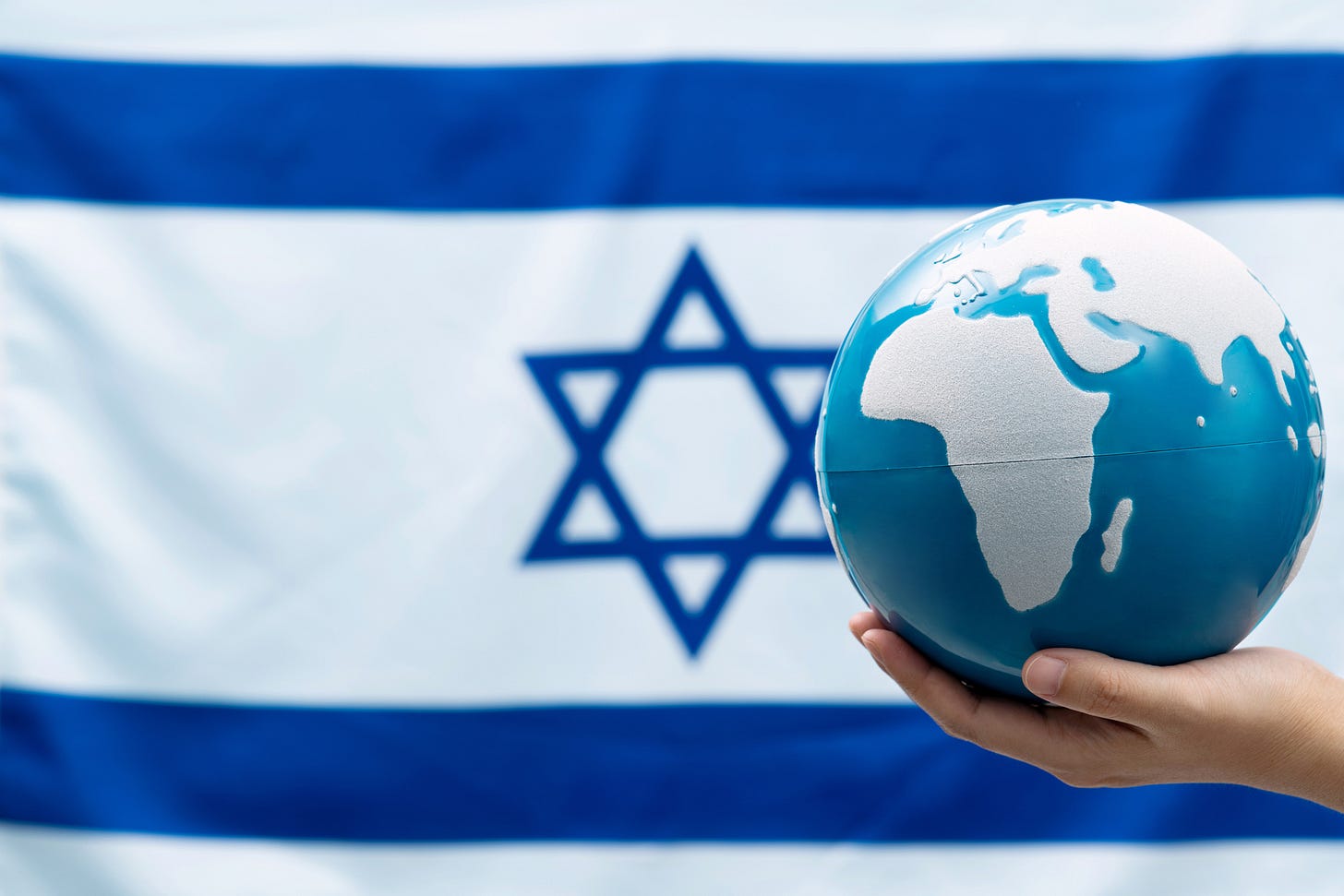
I fully empathize with your struggle. As a single proud Zionist jewess who lives on the west coast, dating or rather attempting to meet anyone even for social reasons has become even more stressful, cautious, keeping me constantly on edge waiting to see what will slip out of someone’s mouth when they utter an opinion with little factual evidence. I live in a rural area and as a child of a holocaust survivor, I’m already on guard. Here it’s either a well meaning but annoying Christian trying to convert me or outright anti semitism, very little I’m between. Attempting to meet anyone is not something I want to tackle in today’s environment